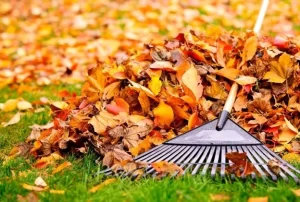Pruning is one of the most powerful tools in a gardener’s arsenal. When done correctly, it encourages healthy growth, improves flowering and fruiting, and shapes plants for both beauty and function. Pruning allows light and air to circulate better through branches, reduces the risk of disease, and helps plants direct their energy where it’s needed most. It’s not just about cutting — it’s about understanding the natural form of each plant and enhancing it for long-term vitality.
However, improper pruning can weaken, disfigure, or even kill your plants. Over-pruning, poor timing, or using the wrong tools can create wounds that invite pests and diseases, or lead to stunted, unbalanced growth. That’s why thoughtful, well-informed pruning is essential. This comprehensive guide explores the essential do’s and don’ts of pruning, helping you avoid common mistakes and maximize your garden’s potential. From knowing when to prune specific species to mastering clean, precise cuts, you’ll gain the confidence to shape a healthy, beautiful outdoor space.

Why Pruning Matters: Understanding the Purpose
Pruning is the selective removal of branches, stems, buds, or roots to:
- Promote healthy new growth
- Remove dead, diseased, or damaged wood
- Encourage flowering and fruiting
- Control plant size and shape
- Improve air circulation and light penetration.
But to achieve these benefits, you must prune with care and knowledge.
The Do’s of Pruning
1. Prune with a Purpose
Before making any cuts, have a clear reason for pruning. Are you removing dead wood, shaping the plant, or encouraging blooms? Each goal may require a different technique or timing.
2. Use the Right Tools
-
-
- Pruning shears: For cuts up to 3/4 inch in diameter.
- Loppers: For branches up to 1 1/2 inches.
- Hand or pole saws: For larger branches.
-
Keep your tools clean and sharp to make clean cuts and prevent the spread of disease.
3. Make Proper Cuts
-
-
- Cut just outside the branch collar: The branch collar is the swollen area at the base of a branch. Cutting here allows the plant to seal the wound properly, reducing the risk of disease.
- Use the three-cut method for large branches: This prevents bark tearing and ensures a clean removal.
- Prune just above a bud or node: This encourages healthy regrowth and prevents dieback.
- Cut at a 45° angle: This allows water to run off, reducing the risk of rot and fungal infection.
-
4. Prune at the Right Time
-
-
- Winter (Dormant season): Most deciduous trees and shrubs benefit from winter pruning, which encourages vigorous spring growth.
- After flowering: Prune spring-flowering shrubs immediately after they bloom to avoid cutting off next year’s buds.
- Summer for certain species: Some trees, like cherry and plum, should be pruned in summer to avoid disease.
- Research your plant: Timing varies by species—check reliable sources before you prune.
-
5. Remove the Right Amount
-
-
- Follow the 1/3 Rule: Never remove more than one-third of a plant’s foliage in a single year. Over-pruning can shock the plant and reduce its vigor.
- Focus on dead, diseased, or crossing branches: Prioritize these before shaping or thinning.
-
6. Encourage Good Structure
-
-
- Thin out crowded branches: This improves light and air flow, reducing disease risk and promoting even growth.
- Prune to an outward-facing bud: This shapes the plant and encourages growth in the desired direction.
-
7. Maintain Your Tools
-
-
- Sharpen regularly: Clean, sharp tools make precise cuts that heal quickly.
- Sanitize between plants: Prevent the spread of disease by disinfecting tools, especially when moving between diseased and healthy plants.
-
The Don’ts of Pruning
1. Don’t Make Flush Cuts
Cutting branches flush with the trunk removes the branch collar, hindering the plant’s ability to seal the wound. This leaves the plant vulnerable to pests and diseases.
“A flush cut removes the branch collar, an area of tissue that’s needed to form a seal over the pruning cut. Because the plant cannot close over the wound, a flush cut leaves an opening for pests and pathogens to enter the plant and damage or kill it.”.
2. Don’t Prune at the Wrong Time
Pruning at the wrong season can:
-
- Remove flower buds (reducing blooms)
- Cause excessive sap bleeding (as in grapevines)
- Increase disease risk (as with stone fruits in winter)
3. Don’t Over-Prune
Removing too much at once can:
-
- Shock the plant
- Reduce photosynthesis (by removing too many leaves)
- Cause dieback or weak regrowth
4. Don’t Leave Large Stubs
Leaving stubs prevents proper healing and invites rot and pests. Always cut just above a bud or branch collar, not in the middle of a stem. Clean pruning helps plants recover quickly.
5. Don’t Use Dull or Dirty Tools
Ragged cuts take longer to heal and can introduce disease. Dirty tools can spread pathogens from plant to plant. Keeping your equipment sharp and sanitized makes every pruning job safer and more effective.
6. Don’t “Top” Trees or Shrubs
Topping—removing the uppermost branches—can cause:
-
- Weak, spindly regrowth
- Increased risk of disease and decay
- Loss of natural form and structure
Responsible pruning avoids topping and instead shapes trees with long-term health in mind.
7. Don’t Snip Just the Tips (“Stubbing Out”)
Repeatedly snipping branch tips leads to a dense cluster of weak shoots, making the plant harder to manage and less healthy.
“Snipping the tips of branches (stubbing out) is one of the worst pruning mistakes you can make. Pruning stimulates the plant to grow, so when you snip the tip of one branch, four to six new branches take its place.”
8. Don’t Ignore Plant-Specific Needs
Different species require different approaches. For example, conifers, fruit trees, and flowering shrubs all have unique pruning requirements.
Common Pruning Mistakes and How to Avoid Them
Mistake 1: Pruning Too Much
- Why it’s bad: Over-pruning removes too much foliage, reducing the plant’s energy reserves.
- How to avoid: Remove no more than one-third of the plant at a time. Focus on dead, diseased, or crossing branches first.
Mistake 2: Wrong Timing
- Why it’s bad: Can remove flower buds or increase disease risk.
- How to avoid: Research the best time for each species. For spring-flowering shrubs, prune after blooming; for summer-flowering, prune in early spring.
Mistake 3: Making Improper Cuts
- Why it’s bad: Flush cuts or stubs hinder healing and invite pests.
- How to avoid: Cut just outside the branch collar or just above a bud, at a 45° angle. These pruning techniques allow plants to heal faster and stay healthier.
Mistake 4: Using Dull or Dirty Tools
- Why it’s bad: Ragged cuts and disease spread.
- How to avoid: Keep tools sharp and disinfected.
Mistake 5: Not Cleaning Up
- Why it’s bad: Diseased or infested debris can reinfect plants.
- How to avoid: Remove and dispose of all cuttings, especially if diseased.
Advanced Tips for Better Pruning
- Thin, don’t shear: For most shrubs, thinning (removing entire branches) is healthier than shearing (cutting all branches to the same length).
- Encourage outward growth: Prune to outward-facing buds to keep the center open and promote a balanced shape.
- Balance vigor: Prune weak stems harder than strong ones to even out growth.
- Observe and adjust: Watch how your plants respond and adjust your technique as needed.
Pruning for Plant Health and Beauty
Proper pruning is both an art and a science. It requires understanding plant biology, using the right tools, and making thoughtful decisions about timing and technique. When done right, pruning:
- Stimulates healthy new growth
- Increases flowering and fruiting
- Prevents disease and pest infestations
- Maintains attractive shapes and sizes.
Summary Table: Pruning Do’s and Don’ts
|
Do’s |
Don’ts |
|
Use clean, sharp tools |
Make flush cuts or leave stubs |
|
Prune at the right time for each species |
Prune at the wrong season |
|
Cut just above a bud or branch collar |
Over-prune or “top” trees/shrubs |
|
Remove dead, diseased, or crossing wood |
Use dull or dirty tools |
|
Make cuts at a 45° angle |
Ignore plant-specific requirements |
|
Prune to an outward-facing bud |
Repeatedly snip just the tips |
|
Thin crowded branches |
Leave debris on the ground |
|
Follow the 1/3 Rule |
Prune without a clear purpose |
Conclusion: The Importance of Pruning for Plant Health and Beauty
Pruning is essential for plant health, beauty, and productivity—but only when done thoughtfully. By following these do’s and don’ts, you’ll avoid the most common mistakes, boost your plants’ growth, and enjoy a thriving, beautiful garden year after year. Take the time to learn about your plants, use the right tools, and prune with care—your garden will thank you with vigorous growth and abundant blooms. Regular pruning not only keeps your landscape looking its best, but also helps prevent disease, encourages strong structure, and supports long-term plant vitality. Whether you have ornamental shrubs, fruit trees, or flowering perennials, well-timed pruning makes all the difference in achieving a healthy, vibrant yard.
When it comes to expert pruning and landscape care, Hawkins Landscaping Inc. is the name you can trust. With decades of experience serving Frederick County and surrounding areas, our skilled team knows exactly how to shape, trim, and maintain your plants for optimal health and beauty. We go beyond basic maintenance—our tailored pruning services help protect your investment, enhance curb appeal, and ensure your garden thrives year-round. From residential yards to large commercial properties, Hawkins Landscaping Inc. is dedicated to delivering exceptional results with care and precision.
Let Hawkins Landscaping Inc. bring out the best in your landscape! Call us today at (301) 898-3615 or visit www.hawkinslandscaping.com to book your pruning service or request a free estimate. Your dream garden is just a call or click away!




